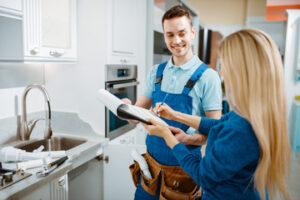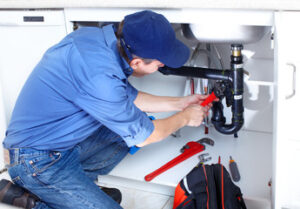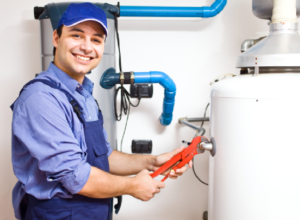Plumbing systems remove waste water, provide hot and cold water, and regulate indoor climate. These systems are crucial to the functionality of homes and businesses. Plumbers install and repair these systems. They must have intense listening skills to understand customer complaints and determine the best solutions.

Plumbers Bradenton must also be knowledgeable about building codes and regulations. They often collaborate with other construction professionals to ensure that plumbing systems are integrated seamlessly into building projects.
Rather than dig up your yard, driveway, and sidewalks to replace or repair a damaged sewer line, plumbers can now use trenchless methods that avoid the expense and hassle of digging. The most common methods are pipe bursting and slip lining. Each involves placing a new pipe inside your existing one. The resulting pipes are sturdy and durable, and they can easily handle your home’s sewage needs for decades.
A certified plumbing professional can assess your sewer pipes to determine the appropriate method. They will feed a camera through the lines to evaluate the condition and spot any potential problems. Depending on the findings, they may recommend either trenchless sewer repair or traditional excavation.
Trenchless sewer repair uses minimal disruption and a shorter restoration period than traditional excavation. It also minimizes the risk of damage to underground systems such as water, gas, and electrical lines. A qualified plumber can quickly and safely perform trenchless sewer repair to restore your pipes to good condition.
While trenchless methods are effective in addressing most types of sewer issues, they cannot fix certain issues such as poor structure or routing. A professional plumber can recommend additional repair options if necessary.
The cost of trenchless sewer repair varies depending on the size of your pipes and how much work is needed to restore them. However, on average, the price is around $155 per linear foot of pipe. This is significantly less than the cost of traditional excavation, which can run up to $250 per linear foot.
To perform trenchless sewer repairs, plumbers insert a flexible tube into the existing line. Then, they inflate it and cure it using heat or UV light. Once the cured tube is in place, it will serve as your new inner pipe and effectively address any cracks, holes, or clogs.
In addition to avoiding the costly disruption of digging up your lawn and driveway, trenchless repairs are environmentally friendly. These techniques use smaller machinery and cause less soil erosion. They also reduce the amount of debris that ends up in lakes and rivers. Furthermore, liners are less likely to corrode as they are not exposed to water byproducts.
Pipe lining
Pipe lining, or trenchless sewer repair, involves coating an old pipe with a new lining that hardens to create a pipe within the pipe. It’s an efficient and cost effective alternative to full-on pipe replacement, and it can restore pipes that have been damaged by corrosion, erosion or root invasion. It’s also an ideal option for rehabilitating pipelines that carry corrosive substances, like oil refining chemicals or toxic industrial wastes.
A plumber can use one of four different methods to repair a sewer line without digging trenches. They include internal pipe coating, cured-in-place pipe (CIPP), slitting, and pull-in-place pipe lining. Each has its own benefits, but they all require less time and resources than traditional excavation techniques.
Before starting any work, a plumber will map out the sewer system using CCTV cameras. They will then implement a plan to minimize disruption and afford the best timeline for the project. They’ll start by cleaning the existing line and removing debris buildup. Next, they’ll line the pipes with an epoxy-saturated felt liner. The liner can be cut to fit any pipe diameter and is more durable than older lining materials. It also offers superior protection from chemical attack and can be used on almost any type of pipe material.
During the CIPP process, a technician will create access points to feed the liner into place. Then, air is pumped into the liner to push it against the walls of the existing pipe. The liner is left to harden for a few hours or days, after which it will be ready to be used again.
While CIPP is the preferred method, other pipe relining methods are available. These include internal pipe coating and slitting, both of which require the pipes to be drained before applying the coating or slicing it open. These processes are less expensive than CIPP, but they may not be suitable for all situations.
When compared to traditional excavation, pipe lining is a faster and more affordable alternative for Dallas homeowners with buried pipes that need repairs. However, a homeowner should always consult with a plumbing company to ensure that the pipe lining procedure is performed correctly.
Pipe bursting
Pipe bursting is an innovative way to replace underground pipes without damaging the surrounding area. This technique can help plumbers save time and money by replacing old pipes with new, stronger materials. It also helps reduce the risk of water damage in the future. However, there are a few important things homeowners should know about this process before it is used on their home.
Symptoms of a burst pipe include puddles, water smells, and sound noises. These symptoms may be caused by a wide variety of issues, but a plumber should always investigate to ensure the source is a damaged pipe. Water sounds like clanging or banging may indicate that a pipe is moving and causing a break. Water stains on walls and ceilings are also a sign of a broken pipe. These stains are often reddish or dark in color and can be caused by rust or corrosion from a damaged pipe.
When a pipe bursts, it can cause a lot of water damage in a short amount of time. The water will seep into the building materials and can lead to mold, rot, or other serious problems. In addition, the burst pipe will waste gallons of water every day. This can add up quickly and result in a huge water bill.
Before the plumber starts repairing the burst pipe, they will dig a launch pit where the new pipe will be placed. The new pipe will be attached to an expander, which will guide it into the space of the existing pipe. Once the expanded pipe has been positioned, it will be cut with the cutter. Then, the bursting head will be attached to the end of the new pipe and pushed into place against the old one.
A burst pipe can be a serious problem, but with the right preventative measures, homeowners can limit the damage. It is important to take regular care of your plumbing system, which includes yearly inspections. In addition, insulating your pipes and keeping them clear of blockages can help prevent pipe bursts in the future.
Pipe relining
Pipe relining is an eco-friendly trenchless plumbing technology that is used to fix damaged pipes and drains without digging. The process is also cost-effective compared to traditional pipe replacement and can be completed in a shorter time. Besides, it does not cause any disruption to homes and businesses. It can be conducted on all types of pipes, including stormwater drains, septic pipes, and sewer lines.
The process of pipe relining starts with a thorough inspection of the damaged pipes by a plumbing expert. This helps to identify the type of damage and the location of the problem. It is then followed by cleaning the pipe with water jets to remove any blockages and debris. A resin-saturated liner is then inserted into the existing damaged pipe and expanded to fit snugly against its walls. Once the liner is in place, it is cured with UV light or left to set for several hours.
After the lining is complete, a final video pipe inspection is done to ensure that the new liners are working well. It is important to hire an experienced plumber to conduct the relining process, since poor installation may lead to future problems. In addition, the relining material only lasts for as long as 50 years, so it is crucial to have regular maintenance checks done by a professional plumber.
While pipe relining is a highly efficient method of fixing pipes, it is not suitable for all conditions and types of damage. If your pipes are extensively damaged, or you have large cracks and breaks, it is best to get them replaced with a new one. Moreover, the cost of pipe relining is significantly less than that of replacing a whole length of pipe.
Besides, pipe relining is much faster than the traditional digging methods and doesn’t disturb the surrounding area. This makes it an excellent choice for residential and commercial properties with limited space or a busy street. Moreover, it’s ideal for pipes in hard-to-reach areas.
The benefits of pipe relining are many. It is more durable than older pipes and can withstand a lot of pressure. It also provides a smooth surface for water to flow through, making it easier for debris and waste to move out of the drain. It is also more environmentally friendly than traditional digging methods, as it leaves the old pipes intact.



